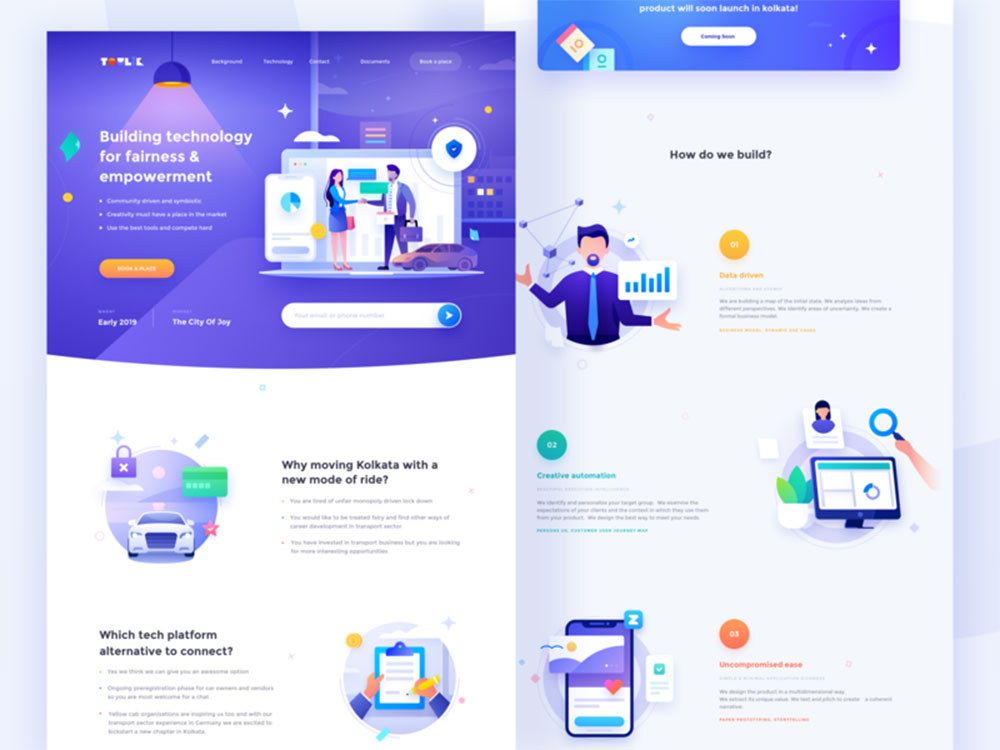7 Mistakes Web Designers Often Make When Doing a Redesign

If you’re not happy with how your website is performing, or if it’s just time for a rebrand, a website redesign might be the best way forward. This is an opportunity to completely change the layout and aesthetic appeal of your site, while simultaneously preserving its content and authority.
But if you’re not careful, critical mistakes during a website redesign could set you up for failure.
The Merits of a Website Redesign
There are many valid reasons for pursuing a website redesign. This might be an extension of a rebranding campaign, it could be a pursuit of conversion optimization, or it might just be a refresh of materials and design elements that are currently outdated.
Whatever your motivation, it’s important to take your redesign seriously and optimize it for your business goals.
7 Mistakes Web Designers Often Make When Doing a Redesign
These are some of the most common mistakes made by web designers during a redesign:
Failing to performance test
If your website doesn’t perform well, it’s not going to be successful. If any page of your website takes more than six seconds to load, it’s probably going to cause people to leave prematurely. And if your entire website suffers from performance problems, it’s not going to rank well. Designers can make many mistakes during a website redesign to influence performance, such as failing to resize images, failing to compress images, making too many HTTP requests, failing to install a caching plugin, and embedding components on all pages when not necessary. The only appropriate solution is to performance test the website before it goes live, so you can catch and correct these issues.
Misusing robots.txt
Many e-commerce websites allow users to sort and filter products; this is great for UX, but can sometimes lead to having a large set of very similar URLs for what’s essentially the same content. According to SEO consultant Michael Cottam, “the RIGHT way to handle this problem is setting rel canonical statements that ignore the sorting and filtering parameters. The WRONG way to handle this (I’m looking at YOU, Shopify!) is blocking URLs with parameters in robots.txt.”
Using CSS background-image to embed content images
This may seem like an easy way to make a page of your website friendly to mobile devices (since CSS employs automatic resizing of images); this change is a way of categorizing images to be viewed as merely background, rather than serving as part of your core content. Additionally, this change prevents you from adding ALT text – which can describe to Google what your image is of.
Exposing a staging site to Google
Most designers and developers work on a “staging site,” which allows them to see a preview of the website before it goes live. This is extremely convenient for testing the website, showing it to clients, and making sure it’s fully functional prior to launch. However, if Google can see these unfinished, “staged” pages, bots could interpret the website as a clone of a previously indexed site – and index the content from it. The best solution here is to password-protect all pages on the staging site, though you can also set meta robots “noindex” on all pages. Do not solve this issue by blocking Googlebot in robots.txt, as Google often indexes pages that are blocked here.
Designing the website to be too clean
We all love clean, minimalistic websites – but there’s such a thing as going too far. We’re all familiar with the expression that “content is king,” so what do you think is going to happen to your website if there’s no discernable content on it? If you want to be successful, you need thorough coverage of your chosen topic in terms of related keywords and subtopics, original, high-quality images related to that topic, high-quality video content on that topic, and appropriate schema.org markup.
Changing URLs unnecessarily
There’s nothing wrong with changing a URL when the change is truly necessary – but in many cases, these URL changes do more harm than good. While it’s true that having your target keywords in a page’s URL can help it rank, when you “move” a page to a different URL, Google starts calculating PageRank for the new page from scratch. That means you could stand to lose significant authority – even if you set up proper 301 redirects. You’re better off leaving your old URLs the way they are (in most cases) and creating new URLs from scratch as necessary.
Changing your subdomain
These days, starting a URL with “www” is viewed as somewhat obsolete or “old school,” so web designers are often motivated to switch to a non-www subdomain. However, it’s important to be aware that Google sees a “www” version of a website as totally distinct from a non-www version of that website. Even with proper redirects, it’s unlikely you’ll be able to recover all your old link juice when migrating to a new subdomain.
When implemented successfully, a website redesign could make your website more appealing to your target demographics, capable of earning more conversions, and better suited for the top ranks in search engine results pages (SERPs). And fortunately, most of the top mistakes made by website designers can be easily avoided with proactive knowledge and thoughtful planning.
- Playtime Perfection: Fun Kids Color Palettes - 4 May 2024
- PX to REM Converter - 4 May 2024
- The Amstel Logo History, Colors, Font, And Meaning - 3 May 2024









